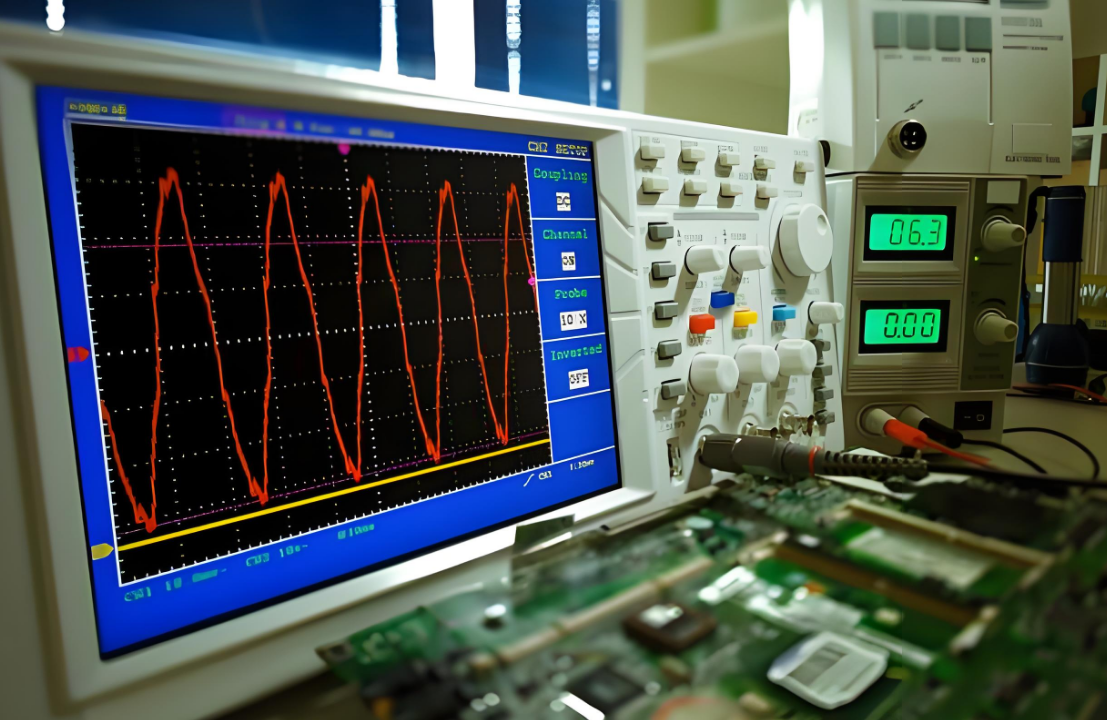In the aerospace industry, precision and reliability are non-negotiable. When it comes to printed circuit boards (PCBs), meeting the highest quality standards is critical for safety and performance. AS9100 certified aerospace PCB manufacturing ensures that every board meets stringent requirements for design, production, and testing. At ALLPCB, we prioritize impeccable quality through adherence to aerospace standards like AS9100, delivering PCBs that power mission-critical applications.
In this comprehensive guide, we’ll explore what AS9100 certification means for aerospace PCB manufacturing, why it matters, and how it ties into other standards like ISO 9000 and AS9102 first article inspection. We’ll also cover supplier qualification and the importance of meeting EASA PCB standards for global compliance.
What is AS9100 Certification in Aerospace PCB Manufacturing?
AS9100 is an internationally recognized quality management standard specifically designed for the aerospace industry. It builds on the foundation of ISO 9000 but includes additional requirements tailored to aerospace applications, such as risk management, configuration control, and traceability. For PCB manufacturing, AS9100 certification ensures that every step—from design to delivery—meets rigorous safety and reliability standards.
In aerospace, where a single faulty component can lead to catastrophic failure, AS9100 PCB manufacturing provides a framework for consistent quality. This certification covers everything from material selection to final inspection, ensuring that PCBs can withstand extreme conditions like temperature fluctuations, vibration, and high-altitude environments. For instance, aerospace PCBs often need to operate in temperatures ranging from -55°C to 125°C and handle signal speeds up to 10 Gbps for advanced avionics systems.

Why AS9100 Certification Matters for Aerospace PCBs
The aerospace industry demands zero tolerance for errors. AS9100 certification matters because it establishes a systematic approach to quality that minimizes risks. Here are some key reasons why this certification is essential:
- Enhanced Safety: AS9100 ensures that every PCB undergoes strict testing to prevent failures in critical systems like navigation or communication.
- Regulatory Compliance: Certification aligns with global aerospace regulations, making it easier to supply components for international projects.
- Customer Trust: Aerospace companies prefer working with certified manufacturers, knowing that their products meet industry benchmarks.
- Risk Reduction: The standard emphasizes risk management, identifying potential issues before they become costly problems.
For example, an aerospace PCB used in a satellite must maintain impedance control within ±10% to ensure signal accuracy. AS9100 processes help manufacturers achieve this precision through detailed documentation and quality checks at every production stage.
ISO 9000 and Aerospace PCB Manufacturing: The Foundation of Quality
While AS9100 is specific to aerospace, it is built on the principles of ISO 9000, a general quality management standard. ISO 9000 focuses on consistent processes, customer satisfaction, and continuous improvement. For aerospace PCB manufacturing, ISO 9000 serves as the baseline, ensuring that fundamental quality systems are in place before adding aerospace-specific requirements.
In practice, ISO 9000 aerospace PCB processes involve detailed record-keeping and standardized workflows. This might include tracking the dielectric constant of PCB materials (typically between 3.5 and 4.5 for high-frequency aerospace applications) to ensure signal integrity. By combining ISO 9000 with AS9100, manufacturers create a robust quality system that meets both general and industry-specific needs.

Aerospace PCB Certification: Beyond AS9100
While AS9100 is the cornerstone of aerospace PCB certification, other standards and processes play a vital role in ensuring quality. Certification isn’t just a one-time achievement; it’s an ongoing commitment to excellence. Here are additional certifications and practices that complement AS9100:
AS9102 Aerospace First Article Inspection (FAI)
AS9102 defines the requirements for first article inspection (FAI), a critical step in aerospace PCB manufacturing. FAI involves a detailed evaluation of the first production run to confirm that the design, materials, and processes meet all specifications. This process is essential for validating that a PCB can handle specific requirements, such as maintaining a trace width of 0.1mm for high-density interconnects in avionics systems.
AS9102 aerospace first article inspection ensures that any issues are caught early, preventing costly rework or delays. It also provides documented evidence that the manufacturing process is repeatable and reliable for large-scale production.
EASA PCB Standards and Compliance
For manufacturers supplying PCBs to the European market, compliance with EASA (European Union Aviation Safety Agency) standards is crucial. EASA PCB standards focus on safety and airworthiness, aligning with AS9100 but emphasizing specific documentation and testing for aviation components. Meeting EASA requirements ensures that PCBs can be used in aircraft certified for operation in Europe, expanding market access for manufacturers.
For instance, EASA might require additional testing for electromagnetic interference (EMI) shielding, ensuring that a PCB’s performance remains unaffected by external signals. This often involves using materials with a shielding effectiveness of over 60 dB at frequencies up to 1 GHz.

Aerospace PCB Supplier Qualification: Choosing the Right Partner
Selecting a qualified supplier for aerospace PCBs is as important as the certification itself. Aerospace PCB supplier qualification involves evaluating a manufacturer’s ability to meet technical, quality, and delivery requirements. Here are key factors to consider during supplier qualification:
- Certification Status: Ensure the supplier holds AS9100 certification and complies with related standards like AS9102 and EASA regulations.
- Traceability: Suppliers must provide full traceability of materials and processes, documenting every step for accountability.
- Technical Capability: Verify that the supplier can handle specific requirements, such as multilayer PCBs with 16+ layers or impedance matching within ±5% tolerance.
- Quality Control: Look for robust testing protocols, including automated optical inspection (AOI) and X-ray inspection for hidden defects.
- Delivery Reliability: Aerospace projects often operate on tight schedules, so on-time delivery is critical.
At ALLPCB, we understand the importance of supplier qualification. Our processes are designed to meet the strictest aerospace standards, ensuring that every PCB we produce delivers unmatched reliability and performance.
Challenges in AS9100 PCB Manufacturing and How to Overcome Them
Manufacturing PCBs for aerospace applications under AS9100 certification comes with unique challenges. Addressing these challenges is essential for maintaining quality and meeting customer expectations. Here are some common hurdles and solutions:
Complex Design Requirements
Aerospace PCBs often have intricate designs with tight tolerances. For example, a PCB for a flight control system might require a stack-up of 12 layers with a total thickness of just 1.6mm. Overcoming this challenge requires advanced design software and skilled engineers who can optimize layouts for performance and manufacturability.
Material Selection for Harsh Environments
Aerospace PCBs must endure extreme conditions, from high-altitude pressure to intense vibrations. Selecting materials with a thermal coefficient of expansion (CTE) below 15 ppm/°C helps prevent delamination and cracking. Manufacturers must work closely with material suppliers to ensure compatibility with AS9100 standards.
Stringent Testing and Documentation
AS9100 requires exhaustive testing and documentation at every stage. This can be time-consuming but is necessary for compliance. Automated testing systems and digital record-keeping can streamline the process, ensuring accuracy without sacrificing efficiency.
The Future of Aerospace PCB Manufacturing with AS9100
As aerospace technology advances, the demand for high-performance PCBs will continue to grow. Innovations like flexible PCBs for compact satellite systems and high-frequency boards for 5G communication in aviation are pushing the boundaries of what’s possible. AS9100 certification will remain a cornerstone of quality, evolving to address new challenges and technologies.
For instance, the rise of unmanned aerial vehicles (UAVs) requires PCBs with ultra-low power consumption, often below 100 mW, to extend flight times. Manufacturers adhering to AS9100 are well-positioned to meet these emerging needs through continuous improvement and innovation.
Conclusion: Trust AS9100 Certification for Aerospace PCB Excellence
AS9100 certified aerospace PCB manufacturing is the gold standard for quality and reliability in the aerospace industry. By adhering to this rigorous certification, along with complementary standards like ISO 9000, AS9102, and EASA regulations, manufacturers can deliver PCBs that meet the demanding needs of aviation and space applications.
 ALLPCB
ALLPCB







